A Car-Lovers’ Paradise in Fengta |
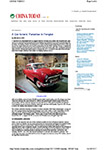 |
<<Click to see original |
It would be an understatement to suggest that the Chinese as a nation are besotted with cars. So it is no surprise that a government-run Beijing Auto Museum (not to be confused with the privately-run Beijing Classic Car Museum in Huairou) was originally planned in 2001 as one of five major museums to be built in preparation for the 2008 Olympic Games. It rapidly fell behind schedule and ground was only broken in 2006, two years late, with an opening date projected for 2010. It only finally opened its doors in September 2011 at what is now just a few minutes’ walk from Fengtai Science Park station.
With an exhibition area of nearly 50,000 square meters and housing over 80 vintage cars from China and abroad, the auto museum is China's first government-funded public museum for automobiles, with its collection spread out over five floors. Although the exhibits are geared more toward casual car lovers and kids rather than die-hard enthusiasts, if you’re a car enthusiast, a visit to the Beijing Auto Museum is also a must.
The vehicle collection includes a replica of the three-wheeled 1885 Benz Motorwagen, a copy of the 1901 Duryea owned by Empress-Dowager Cixi, a 1902 Oldsmobile Curved Dash, a ZIS-101 given to Chairman Mao by the Soviet Union, and past Hongqi limousines, Shanghai sedans, and Beijing Jeeps. There’s also a crop of blue-chip classics such as a Ferrari Dino GT, Jaguar XK120, Lincoln V12 Phaeton and a Bugatti Type 38A.
One gets the impression that this museum has been built not only to inspire, but also to take visitors by surprise. For instance, I am left wondering if this auto museum is the only one in the world selling tickets from a railway carriage! What I would have given to have been a (bilingual) fly on the wall at those evaluation planning committee meetings!
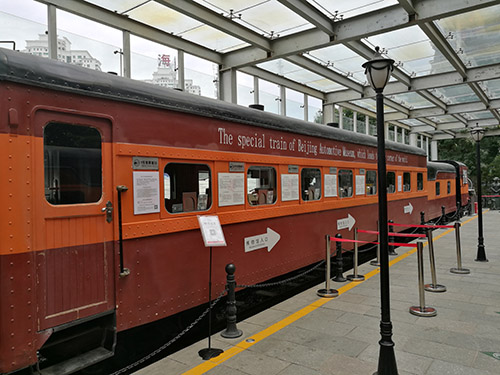
China, we are assured, was one of the earliest countries to have invented wheels; and so from an introduction about wheels, we are led to specimens of horse-drawn carriages from ancient times. For instance there’s a model of the Yellow Emperor’s South-pointing vehicle. Unlike a compass which uses a magnetic needle, a south-pointing vehicle was based on the principle of differential gears. No matter where the wheel turns, the figure on board always points south. Also on display is a working model of perhaps the world's first odometer. During the Han Dynasty (202 BC - 220 AD), this device travelled in a cart with the emperor's caravan. Two ornate figurines were mounted next to a drum; the gears turned and, every 500 metres, one of the figurines beat the drum.
After this, one moves on to what probably everyone has come to this museum to see – real vintage cars (albeit with a few reproductions). Among the authentic vintage cars are a Rolls Royce Silver Ghost Coupe, and an Oldsmobile Curved Dash which was built in 1902 and still, we are told, works over a century later.

A few years earlier – in 1885, to be exact – the world's first petrol-driven automobile put in an appearance. It was widely ridiculed because it went even slower than a horse drawn carriage. The Benz Patent Motor Wagon on display is a replica of an original in Stuttgart. To convince the public of the vehicle's capability for travel, inventor Karl Benz's wife Bertha drove it 106km to visit her parents, becoming the world's first female driver, and driving the first long-distance trip at one and the same time. As they say, the rest is history!
Moving forward to 1906 and a French classic – a De-Dion Bouton… In the first ever Beijing to Paris rally held in 1907, only five cars made it to the finishing line, two of them being De-Dion Boutons; and then in 1908 the Ford Model T came into being. At first they were all manufactured in the traditional way and sold for around $850. But in 1931 Henry Ford had the idea of creating an assembly line – a world first. Output increased dramatically and the price fell to as low as $265. The age of cheap mass transport had arrived.
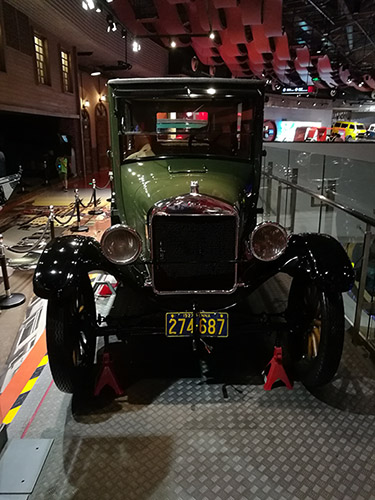
Cheap mass transit was one thing; but luxury cars predominate in this exhibition. Here you’ll find a Lincoln KB-V12 Dual-cowl Phaeton, for example. Lincoln is Ford’s luxury brand, used by US presidents, among others. This model was built in 1932, one of only 28 units ever produced.
There’s also a copy of a 1901 Duryea Runabout ‘L’ (this one actually made in 1903) given to the Empress Dowager Cixi by Yuan Shikai for her 60th birthday that he bought in Hong Kong. It was Yuan, you may recall, who made a short-lived attempt to revive the Chinese monarchy in 1915, with himself as the ‘Great Emperor of China’ before being widely denounced and dying the following year.
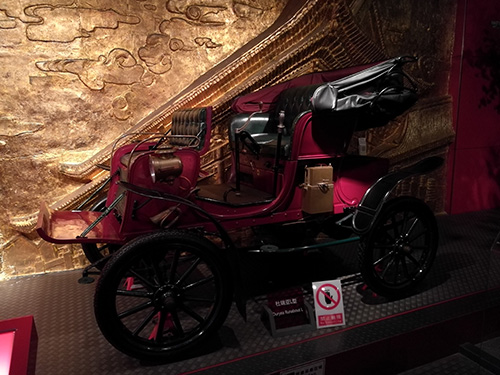
Although the classic cars attract the most selfie-snappers, many of the Chinese autos are what attract the true die-hard enthusiasts. After the founding of the PRC, the first vehicle off the production line was a Jiefang (Liberation) brand truck, manufactured by Changchun First Automobile Works (FAW) in 1956. The first sedan (named Dongfeng) was also made by FAW in 1958. It was the only domestically made car used for official business and was manufactured for the next 30 years. We are told that after Chairman Mao tried out the car for ride and comfort, he smiled and proclaimed, "How wonderful it is to ride in a car of our own!" Four months later the Hongqi (Red Flag) became the first luxury sedan to roll off the production line; but during the 1980s, they stopped being made owing to their massive fuel consumption, high costs and low production rate. In 1984 the Beijing Jeep Automobile Company marked the first joint venture in the car sector in China.
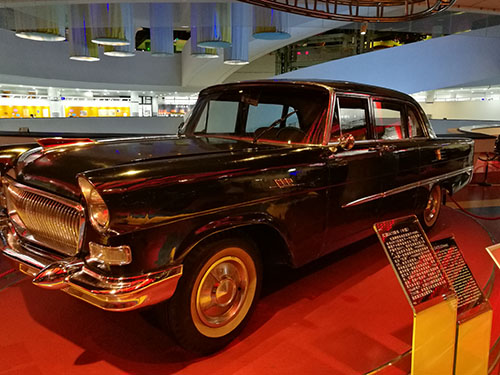
Turning to public transportation, Tianjin saw China's first tramcar in 1906 while Shanghai witnessed its first streetcar in 1908. Beijing only commenced the operation of street cars in 1924. From 1984 to 1999, the Tianjin Automobile plant manufactured 30,000 Daihatsu-style mini-vans, 90 per cent of which were snatched up by taxi companies and became the first mass-used taxis, to be known as Yellow Insects. They were cheap and spacious and met the needs of the market, as people’s incomes were generally low.
Since 2000, Chinese brand vehicles have been gradually taking over, with home built trucks and coaches dominating the domestic market. In 2009 China became the world's largest automobile manufacturer.
To get to the museum, take Line 9 to Fengtai Science Park station; use exit B and walk 200m north, and 300m east. Look for the old locomotive ticket office before trying to enter the building. Admission is 30 ¥.
